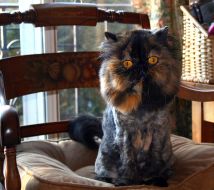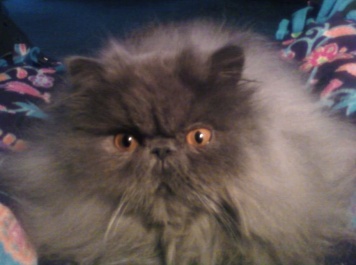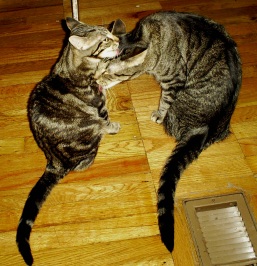Persians are the most popular cat breed in the world. Something about that long, luxurious fur or those flattened facial features has captured the hearts of humanity. Maybe their secret is in that soft, melodic meow.
A Bit of Fuzzy History
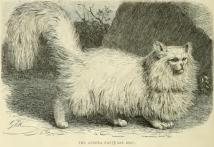
Persian/Angora from 1894. “The Royal Natural History Vol 1” by Richard Lydekker.
Image is in Public Domain
The interaction of the Persian breed with Europeans began in the 1600’s. European explorers visiting the Middle East and India smuggled the cats back to Europe with their other treasures. One such explorer was Pietro della Valle of Italy, who described Persian cats as having gray, long, silky fur. They called them “Persian” cats because they found them in Persia (modern day Iran).
Persian cats became popular in France before they became popular in England. For awhile, Persian cats were referred to as “French cats” because of their popularity in France. By the reign of Queen Victoria (who owned 2 Persian cats), the popularity of Persian cats (and cats in general) skyrocketed in England. During the late 1800’s the Persian cats were exported to the U.S. and quickly became the most popular breed in the world.
Persian Breed Today
The look of Persian cats has changed a bit over the course of their breeding. There are now 150 different variations of the breed. In the US, we classify these cats as one breed called Persian. In England, these cats are known as “Long-Hairs” and each color variation is its own breed. Many modern cat breeders choose the cats with the flattest facial features, known as Extreme Persian, to be their show cats. Persian cats with more protruding features are considered to be “Traditional Persian” or “Doll-Faced Persian.”

Bringing a Persian Cat Home
Regular grooming is a necessary part of having a Persian cat. They have both a thick overcoat and a thick undercoat. Without being combed daily, knots and mats can easily form in that beautiful fur. These cats will also need to be bathed regularly. Many Persian owners opt to have the majority of the fur shaved off (called a Lion’s cut) to keep grooming needs to a minimum.
Unfortunately there are a few health problems common to this breed. Around 40% of Persian cats are affected by Polycystic Kidney Disease, in which the kidneys become covered in cysts and the kidney’s healthy tissue gets destroyed. These cats may need regular ultrasounds of their kidneys to keep an eye on the progress of the disease. Upper respiratory problems and runny eyes are also common.
Persian cats are stereotyped as being lazy, but that isn’t entirely true. They do love to lounge, but they also love to play. These cats prefer to have their feet on the ground and don’t like to jump or climb. While Persian cats adapt easily to any environment, they prefer an environment that is peaceful and secure. They are good with children and other animals. All in all, they make terrific pets that can live 15 – 20 years!
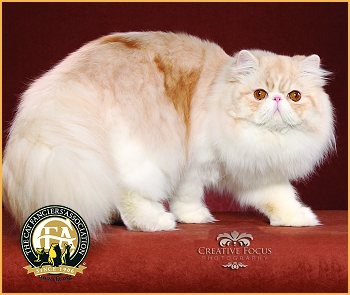
Image courtesy of http://www.cfainc.org



